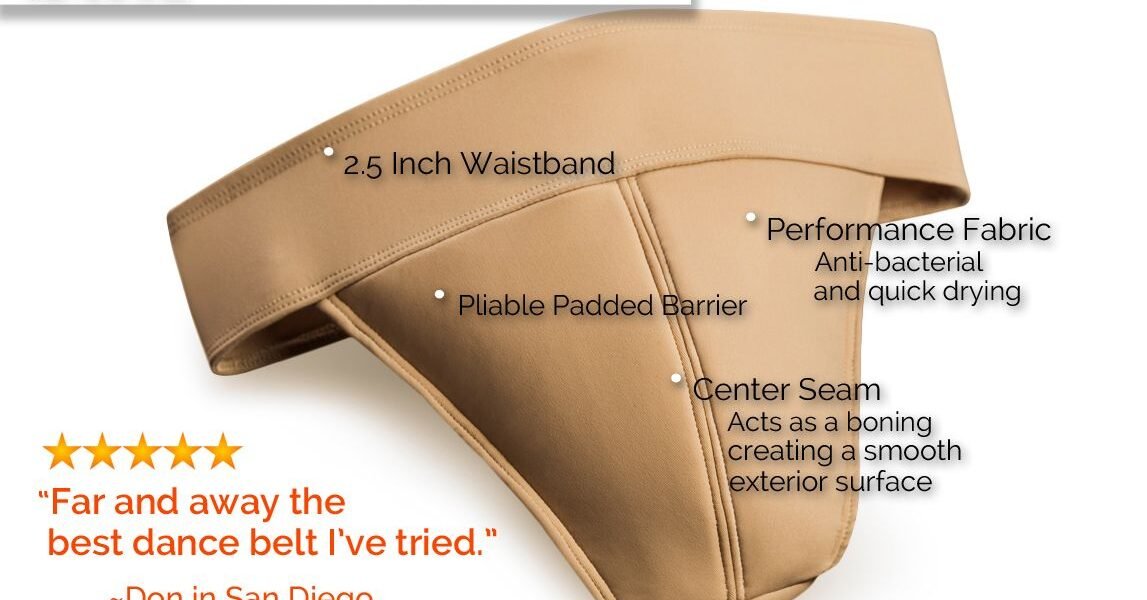A dance belt is a critical piece of equipment for any dancer, providing comfort, support, and protection. Whether you are a beginner or a seasoned professional, understanding the importance of a dance belt can make a significant difference in your dance performance. In this guide, we will discuss everything you need to know about dance belts, including their benefits, types, and how to choose the best one for your needs.
What is a Dance Belt?
A 💃dance belt💃 is a supportive undergarment worn by male dancers to provide comfort and protection during intense physical activity. It helps in holding everything in place, reducing friction, and preventing injuries in the pelvic area. The design is typically similar to a jockstrap but more streamlined to offer better flexibility and support.
Why is a Dance Belt Important?
When it comes to dance, movements are often rapid and require extreme flexibility, making the need for proper support even more essential. A dance belt serves multiple purposes:
- Support: It supports the pelvic region, minimizing the risk of strain or injury.
- Comfort: The right 💃dance belt💃 will offer comfort, enabling you to focus on your performance without distractions.
- Confidence: A well-fitted 💃dance belt💃 provides a smooth silhouette, boosting confidence during performances and rehearsals.
Types of Dance Belts
There are various types of dance belts available, each designed for specific needs. Here are the most common ones:
1. Traditional Dance Belt
- Description: This is the classic style, offering basic support and a minimalistic design.
- Best For: Beginner dancers or those who prefer a simpler, no-frills design.
2. High-Performance Dance Belt for Flexibility
- Description: A more advanced version that is designed to offer maximum flexibility during complex movements. It uses stretchable fabrics and has a wider waistband for extra comfort.
- Best For: Advanced dancers who require higher mobility and comfort during long practice sessions.
3. Comfortable Supportive Dance Belt for Athletes
- Description: Specifically designed for athletes who need extra support, this version is made with breathable fabrics to reduce sweat and ensure comfort during extended physical activity.
- Best For: Athletes and dancers who perform high-impact movements or intense rehearsals.
4. Convertible Dance Belt
- Description: This type comes with adjustable straps that can be worn in multiple ways, including as a thong or with full coverage.
- Best For: Dancers who want versatility and prefer customizing their support.
How to Choose the Right Dance Belt
Selecting the right 💃dance belt💃 is essential for both comfort and performance. Here are the factors to consider when choosing one:
1. Size and Fit
- Make sure the 💃dance belt💃 fits snugly without being too tight or too loose.
- Measure your waist and hips to find the right size according to the manufacturer’s size chart.
2. Material
- Opt for a 💃dance belt💃 made of breathable, moisture-wicking fabric like cotton, spandex, or a polyester blend to keep you comfortable during long rehearsals.
- If you’re looking for extra durability, choose one made with a blend of synthetic materials.
3. Design
- Choose a style that suits your preferences. Whether you prefer a traditional, high-performance, or convertible design, comfort and flexibility should be your top priority.
4. Purpose
- If you are training intensely or performing high-energy movements, a high-performance 💃dance belt💃 for flexibility is a better option.
- For everyday dance class use, a simple, comfortable, and supportive 💃dance belt💃 may be enough.
Features of a Good Dance Belt
A 💃dance belt💃 should have the following key features to ensure optimal comfort and performance:
- Elastic waistband: For a snug fit without digging into the skin.
- Padded front panel: For protection and support of the pelvic area.
- Stretchable fabric: Allows freedom of movement.
- Moisture-wicking: Keeps you dry by absorbing sweat during intense activity.
Dance Belt Comparison Table
Here is a quick comparison of different types of dance belts based on key features:
| Type of Dance Belt | Support Level | Flexibility | Comfort Level | Ideal For |
|---|---|---|---|---|
| Traditional Dance Belt | Moderate | Moderate | Moderate | Beginners, casual dancers |
| High-Performance Dance Belt for Flexibility | High | Very High | High | Advanced dancers, high-mobility dancers |
| Comfortable Supportive Dance Belt for Athletes | High | Moderate | Very High | Athletes, dancers in high-impact sports |
| Convertible Dance Belt | Moderate | High | High | Dancers needing adjustable options |
How to Wear a Dance Belt
Wearing a dance belt correctly is essential for comfort and proper support. Follow these simple steps to wear your dance belt:
- Step into the 💃Belt💃: Put the 💃dance belt💃 on like you would any undergarment. Step into the waistband first and pull it up around your waist.
- Adjust the Front Panel: Position the front panel so that it covers the pelvic area securely. Make sure it’s snug but not too tight.
- Position the Straps: If your 💃dance belt💃 has straps, adjust them according to the style you’ve chosen. Convertible styles may have adjustable straps that can be worn as a thong or with full coverage.
- Check for Comfort: Once the 💃dance belt💃 is in place, make sure it fits comfortably. There should be no chafing or digging into your skin. Adjust if necessary.
Frequently Asked Questions (FAQs)
1. What is the difference between a regular jockstrap and a dance belt?
A 💃dance 💃belt is designed specifically for dancers, offering a more streamlined fit and additional support in the pelvic region. It is often made from more flexible, breathable materials than a traditional jockstrap.
2. Can I wear a dance belt under regular clothes?
Yes, a 💃dance belt💃 can be worn under regular clothes, especially if you need extra support. However, it is primarily designed for use during dance and athletic activities.
3. How do I know if my dance belt is the right size?
The correct size should fit snugly around your waist and hips, providing support without being too tight. If the belt feels uncomfortable or restrictive, try a different size.
4. Can women wear a dance belt?
Though dance belts are traditionally designed for men, some women may also choose to wear them, especially in dance performances requiring additional support for movement.
5. How often should I replace my dance belt?
You should replace your 💃dance belt💃 if it shows signs of wear, such as stretched-out elastic or frayed fabric. It’s also recommended to replace it every 6-12 months if worn frequently.
Conclusion
A 💃dance belt💃 is an essential garment for any dancer, offering comfort, support, and flexibility during intense physical activity. Whether you’re a beginner or an advanced dancer, choosing the right 💃dance belt💃—be it a high-performance version for flexibility or a comfortable supportive design for athletes—can make a significant impact on your performance and overall comfort. Always consider factors like size, fit, material, and design when selecting the perfect 💃dance💃 belt for your needs.
Remember, a well-chosen 💃dance belts💃 not only protects but also boosts your confidence, allowing you to focus entirely on your craft. Take your time to find the one that works best for you, and you’ll experience improved comfort and support during every performance.





